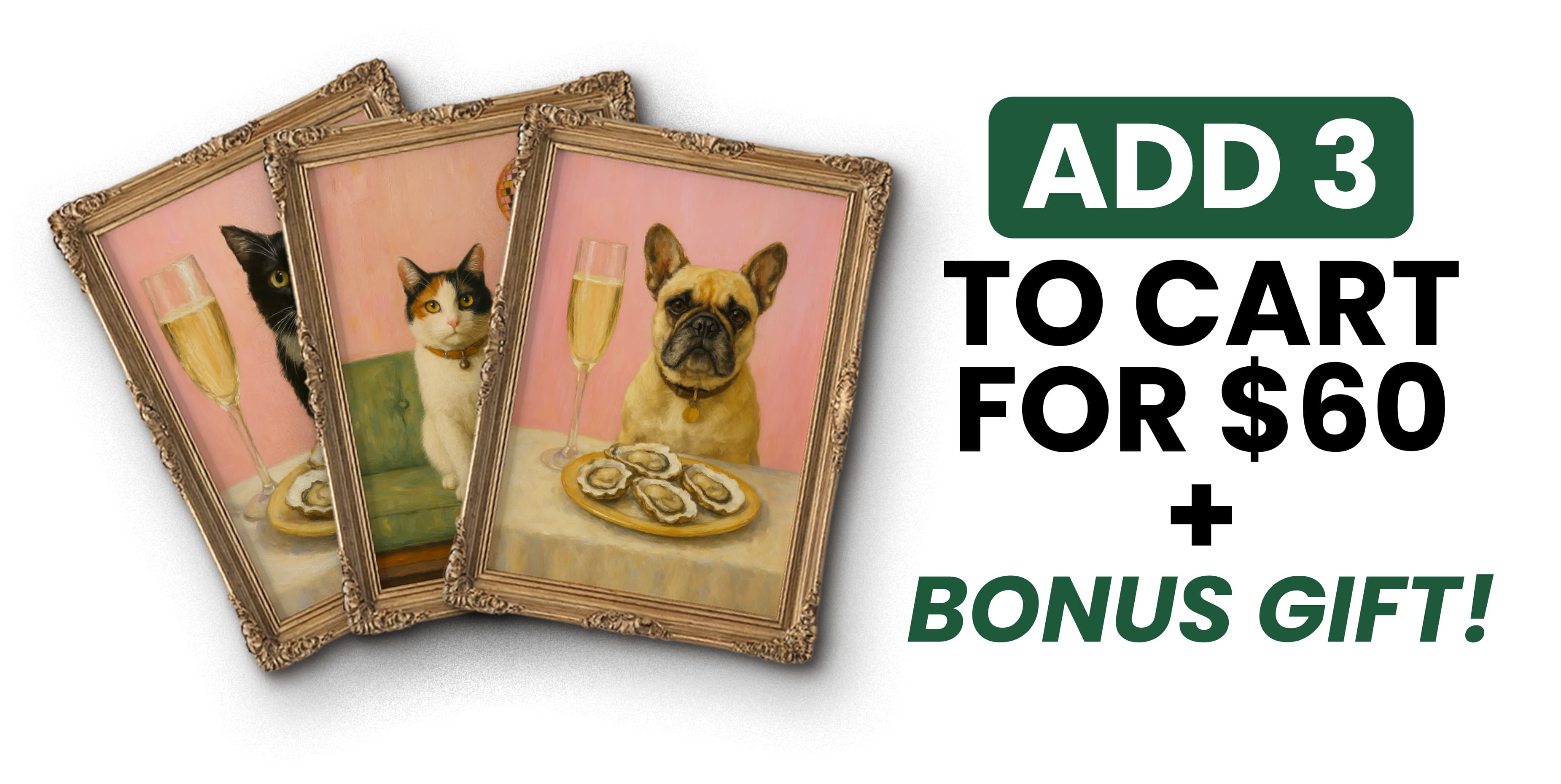We want to share everything in life with our beloved pets, photos on our phones, printed photographs and other pictures, even pet art of themselves! But can our pets really associate a 2-dimensional image shown to them of their owners? Will they be able to identify a pet portrait of themselves? Would your cat be able to see their own cat portrait?
We know that dogs can recognize pictures of their owners and handlers. In a study published by the Journal of Vision, 12 purebred beagles and 12 domestic cats were assigned individual handlers that worked with them 2 hours daily.
After a period of 6 months, the dogs and cats were given a visual test. The dogs chose the face of their handlers 88% of the time, while cats chose 55% of the time. These same test subjects could even identify the face of a familiar animal, with dogs choosing a familiar face 85% of the time while the felines chose 91%. Not only can our pets identify us by our faces, they can also identify faces of both humans and animals in pictures.
When dogs recognize a face in a photograph, their eye movements will shift towards the familiar person if there hasn’t been a dramatic change in physical appearance. Countless pet parents have reported their dog’s startled barking when they undergo a drastic physical change such as shaving off all their hair, wearing a cap which hides the face, or a new bulky coat.
This behaviour will stop the moment you speak to your dog which will then recognize your voice and audibly identify you.
Dogs mostly identify other animals and humans through smell and hearing, particularly with the scent hounds. They have about 300 million olfactory receptors in their noses, compared to a mere 6 million in ours. Their visual perception skills come far behind their formidable sense of smell and hearing.
Then there’s their complete disinterest in their own mirror reflections. Face it, all pet parents have tried to show our pooches their own reflections in mirrors. Young puppies might identify the reflection as another pup and might bark, whine, play bow or react in some way but this stops as they get older, and they simply ignore their reflection.
Science thinks it is likely that dogs cannot recognize their own mirror image and do not understand that it is what they look like. Dogs don’t have the same self-awareness as us and are completely without ego. As such, they most likely have no idea what they look like, although they can recognize their own scent and bark.

Because of their powerful sense of smell, dogs will develop a sense of self through their own scent. Many dogs will not mark over their old spots while going on their daily walks, yet will mark over another dog’s scent.
Cats don’t recognize their own reflections either, despite the countless funny videos of their reaction to their own mirror image. Some might jump in surprise, thinking there is a strange cat in the room. Others might duck behind the mirror to look for the other cat, or some might act aggressive, all puffed out and ears flattened.
Like dogs, a cat’s reaction is to the strange cat in the room, not understanding that it is their mirror image they are experiencing. When your kitty paces back and forth in front of a mirror, she’s probably not admiring her own reflection but rather, investigating the strange cat in her living space.
A study in 1970 by psychologist Gordon Gallup and published in The Cognitive Animal references the “red spot test”, a mirror self-reflection test. Animals were sedated and an unscented red dot placed on its forehead. Some animals, upon waking up, reacted to their own reflection and touched the red spot, an indication that the animal recognized their altered state of its own appearance. In other words, self-recognition.
Some species of animals passed Gallup’s test, like dolphins, gorillas, chimpanzees, orangutans and magpies. Not included in Gallup’s list are dogs and cats. Mirror self-recognition is an indicator of self-awareness, the ability to become the object of your own attention. Most animals respond to their reflections as if confronted with another animal.
Placing a pet portrait or an enlarged photograph of your precious pets will do nothing for their egos and emotions. After all, it is unlikely they know what they look like, and they certainly don’t care!
It is just for our own sake that we choose to include our favourite photos proudly on display and enjoy looking at our furry companions all the time.
A Few Interesting Pet Facts

- Cats have been domesticated since at least 3,600 B.C.E. and dogs started becoming pets as far back as 30,000 years ago
- Cats sleep about 70% of their lives, 16 hours a day!
- Cats can detect higher frequencies than dogs. Like a sophisticated satellite dish turning to pick up a signal, the cat’s external ear can rotate up to 180 degrees to locate and identify the sound.
- Dogs have a sense of time and can get accustomed to their meal, walking, training and work schedules.
- Ever wondered why your dog curls up to sleep? It’s instinctive and relates to evolution. When dogs sleep in the wild, especially where it’s cold, they’ll dig a nest and curl up into it. This saves body heat, tucking into a ball keeps body heat around the core. It also protects their most vulnerable organs in the abdomen from would-be predators.
So if your pooch sprawls out to nap instead of curling up, he’s either hot or he feels very safe in his environment.
- Having a pet and petting it constantly can significantly lower your blood pressure and reduce the risk of stroke or heart attack.
- Often called “a nose with a dog attached”, a Bloodhound’s sense of smell is so accurate and reliable that it can be admitted as evidence in the court of law. They can follow tracks that are over 300 hours old and can stay on a scent trail for over 130 miles!
- Greyhounds are the fastest breed of dog, being able to keep a speed of 35 mph over a distance of up to 7 miles.



